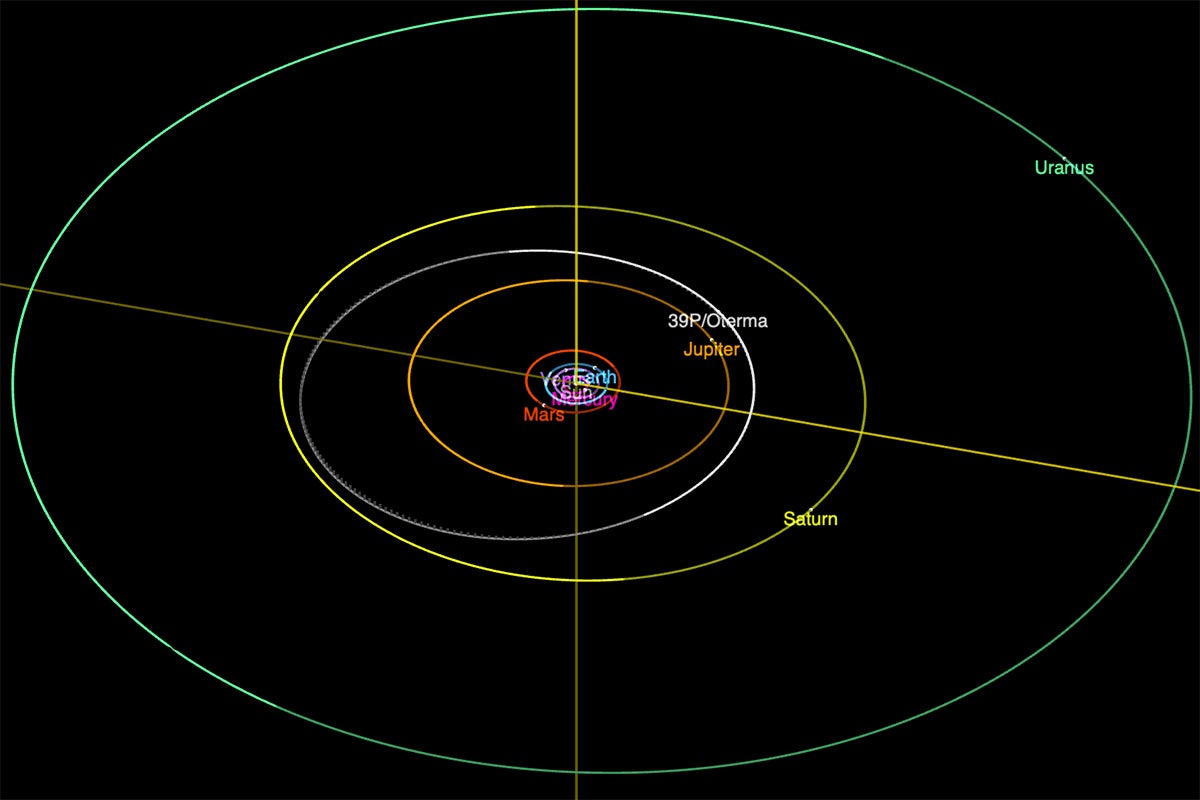Researchers at the University of Central Florida have unveiled a groundbreaking discovery of the chemical and physical properties of Centaur 39P.
The study, First detection of CO2 emission in a Centaur: JWST NIRSpec observations of 39P/Oterma, represents the first-ever detection of carbon dioxide (CO2) emission in a centaur. The results were published in The Planetary Science Journal.
Centaurs are small celestial bodies found between Jupiter and Neptune, exhibiting traits of both comets and asteroids. Studying them is crucial as they offer insight into the early solar system’s formation, composition, and the interactions between icy and rocky materials, helping us understand planetary origins and evolution.
These celestial objects are composed of ice, dust and rock, and they can occasionally release gas and dust tails, making them intriguing subjects for study.
Centaur 39P/Oterma is currently between Jupiter and Saturn; however, it was formerly much closer to the Sun about six decades ago, with its orbit within Jupiter’s.
The breakthrough in this research can be attributed to the James Webb Space Telescope and its revolutionary instrument, NIRSpec, which captures the spectral signatures of celestial objects in the near-infrared region of the electromagnetic spectrum.
“Remarkably, the research findings indicate that 39P/Oterma exhibits the lowest recorded CO2 production rate among centaurs and comets, amplifying the significance of this discovery,” says Olga Harrington Pinto ’23PhD, the study’s lead author. “This showcases the remarkable capabilities of the JWST in capturing the subtle nuances of low production rates from a relatively diminutive celestial object situated at an extraordinary distance from the Sun.” Pinto performed the work while a student with UCF’s physics doctoral program and is now a postdoctoral researcher at Auburn University.
UCF co-authors of the study include Maria Womack, a Department of Physics courtesy professor; Yan Fernandez, a Department of Physics professor; and Charles Schambeau, an assistant scientist with UCF’s Florida Space Institute. The collaborative project was led by Adam McKay at Appalachian State University and involved researchers from various institutions.
The research received partial funding from the Space Telescope Science Institute and the U.S. National Science Foundation. The data were obtained from the Mikulski Archive for Space Telescopes at the Space Telescope Science Institute, which operates under a NASA contract.




